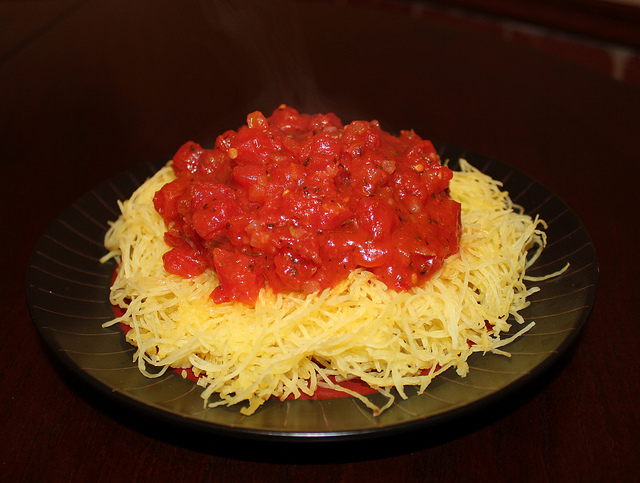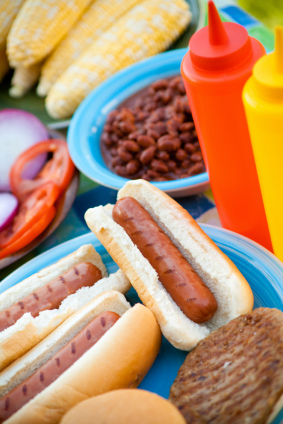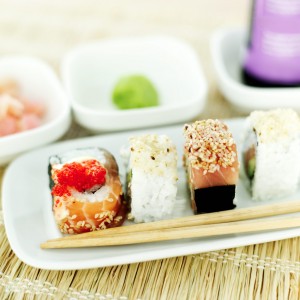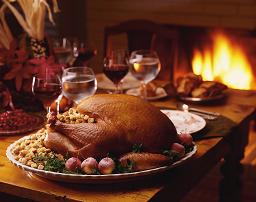
Photo credit: Scott Veg
When you love all things bread and pasta, cutting carbs from your diet can seem nearly impossible.
However, restricting your intake of carbohydrates–especially the kind that come in the form of a large box of pizza—is an important factor to losing weight and living a healthy lifestyle.
Fear not, carb lovers, we’re providing 5 alternatives to some of your favorite recipes that are sans carbs. And they’re delicious.
Spaghetti Squash
Someone from up above took pity on those of us who love pasta by creating the most amazing vegetable, spaghetti squash. As its name implies, it’s a squash that you bake and then scrape out the contents with a fork, and it comes out in strings resembling pasta. The even better part is that it tastes like whatever sauce you put on it!
We recommend this marinara and turkey meatball spaghetti squash recipe as a great alternative to pasta.
Pizza bites
There is a lot of buzz about cauliflower crust pizza floating around in the PinterestSphere, but it can be incredibly time consuming to make (not to mention the smell alone can put off your appetite). These no-crust pizza bites only require a muffin tin, Canadian bacon, shredded mozzarella cheese, pizza sauce, and any additional pizza toppings of your choice.
The best part of this recipe (minus being super duper healthy) is that it allows everyone to create his or her own mini pizza—minus the carbs!
Eggplant pizza
Replace the high-calorie crust with eggplant! Slice the eggplant, salt both sides and let sit to draw out the moisture, sprinkle some herbs, and bake for about 25 minutes. Next, add your pizza toppings, and place back in the oven for a few more minutes. Only downside is this eggplant pizza recipe is a little tricky to eat with your hands—you may have to opt for a fork and knife.
Pepper nachos
This pepper nacho recipe is perfect for the chip lover! Using mini peppers (sliced in half and hallowed-out), stuff full of corn, black beans, pico de gallo, avocado, and low-fat cheese. Pop in the oven until the cheese gets nice and melty, and then snack away!
Roasted chickpeas
Roasted chickpeas are an absolute lifesaver when you need that salty and crunchy fix. Just add olive oil, salt, pepper, and any herbs or spices you’d like and bake for about 15 minutes—so easy and delicious!
Have a favorite carbless recipe you’d like to share? Comment below!









